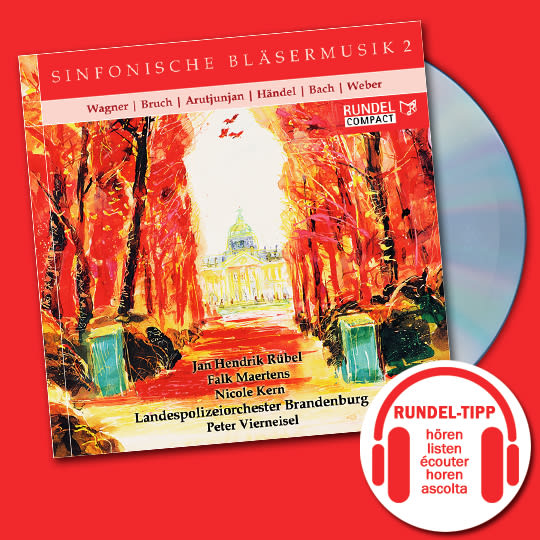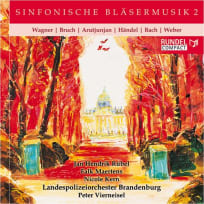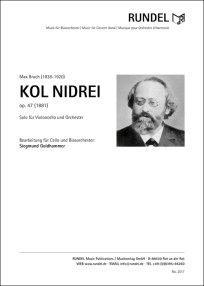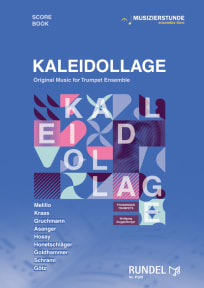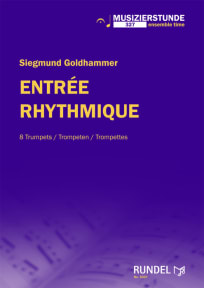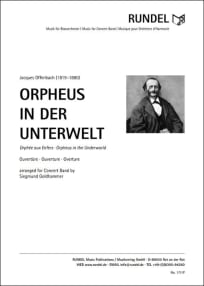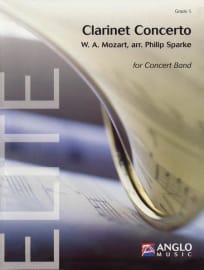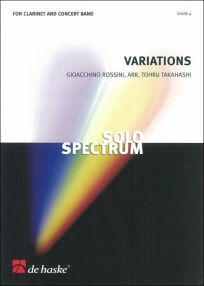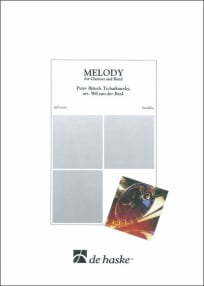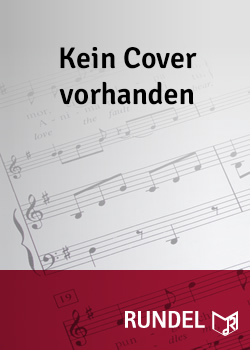Banda (Orchestra di fiati)
Concertino op.26
für Klarinette und Blasorchester
Heinrich Bärmann gewidmet

Banda (Orchestra di fiati)
Concertino op.26
für Klarinette und Blasorchester
Heinrich Bärmann gewidmet
Compositore
Arrangiatore
Evento
Durata
00:09:57
Difficoltà
Ober-/Höchststufe
Editore
Rundel
Formato
A4
Info
Partitura completa + Parti
Numero d'edizione
MVSR2457
Data di pubblicazione
2006
Ascolta
Leggi
Ascolta & Leggi
Lista dei Desideri
Stampa
Consiglia
Info
Carl Maria von Weber succeeded in establishing himself as a pioneer of German opera. With the first performance of his “Freischütz” in Berlin in 1821 Weber was finally given unprecedented acclaim as the founder of German Romantic popular opera.
It would, however, be wrong to limit Weber’s artistic impotrance to his operas. In the course of his short life he wrote some 300 compositions which comprise virtually all the musical genres of the early 19th century. Works for solo instruments and chamber music occupy a special position in his oeuvre.
These include two Clarinet Concertos in F minor (op.73) and E flat major (op.74) and the Concertino in E flat major, op.26, which Weber wrote in only six days. All three works were composed in 1811 and belong to a group of six compositions for clarinet which Weber wrote for the clarinettist Heinrich Joseph Baermann, one of the first great virtuosos on this instrument. It was his friendship with Baermann, but also the sound of the clarinet in particular which inspired Weber to write his concerti.
Baermann undoubtedly gave the composer sound professional advice during the process of writing and demonstrated to him the technical and tonal possibilities of the instrument. As a result, the clarinet became Weber’s favourite instrument and was put to greatest effect where the musical expression was intended to be as intensive and heartfelt as possible. The clarinet solo in the overture to the “Freischütz” is moving evidence of this.
In the one-movement Concertino, Weber proves his playful assuredness in handling the classical forms of the sonata, the concerto and the variation. Here he can demonstrate the sound training which he enjoyed under Abbé Vogler. However, he merely uses these forms as a framework in order to indulge his urge towards a free, rhapsodic, almost improvised, romantic flow of music even more effectively. At the same time, his wealth of sound and his penchant for interesting harmonic turns and unusual instrumental colouring find expression in a convincing manner.
In this arrangement for symphonic wind ensemble, these qualities are intensified yet further.
It would, however, be wrong to limit Weber’s artistic impotrance to his operas. In the course of his short life he wrote some 300 compositions which comprise virtually all the musical genres of the early 19th century. Works for solo instruments and chamber music occupy a special position in his oeuvre.
These include two Clarinet Concertos in F minor (op.73) and E flat major (op.74) and the Concertino in E flat major, op.26, which Weber wrote in only six days. All three works were composed in 1811 and belong to a group of six compositions for clarinet which Weber wrote for the clarinettist Heinrich Joseph Baermann, one of the first great virtuosos on this instrument. It was his friendship with Baermann, but also the sound of the clarinet in particular which inspired Weber to write his concerti.
Baermann undoubtedly gave the composer sound professional advice during the process of writing and demonstrated to him the technical and tonal possibilities of the instrument. As a result, the clarinet became Weber’s favourite instrument and was put to greatest effect where the musical expression was intended to be as intensive and heartfelt as possible. The clarinet solo in the overture to the “Freischütz” is moving evidence of this.
In the one-movement Concertino, Weber proves his playful assuredness in handling the classical forms of the sonata, the concerto and the variation. Here he can demonstrate the sound training which he enjoyed under Abbé Vogler. However, he merely uses these forms as a framework in order to indulge his urge towards a free, rhapsodic, almost improvised, romantic flow of music even more effectively. At the same time, his wealth of sound and his penchant for interesting harmonic turns and unusual instrumental colouring find expression in a convincing manner.
In this arrangement for symphonic wind ensemble, these qualities are intensified yet further.

